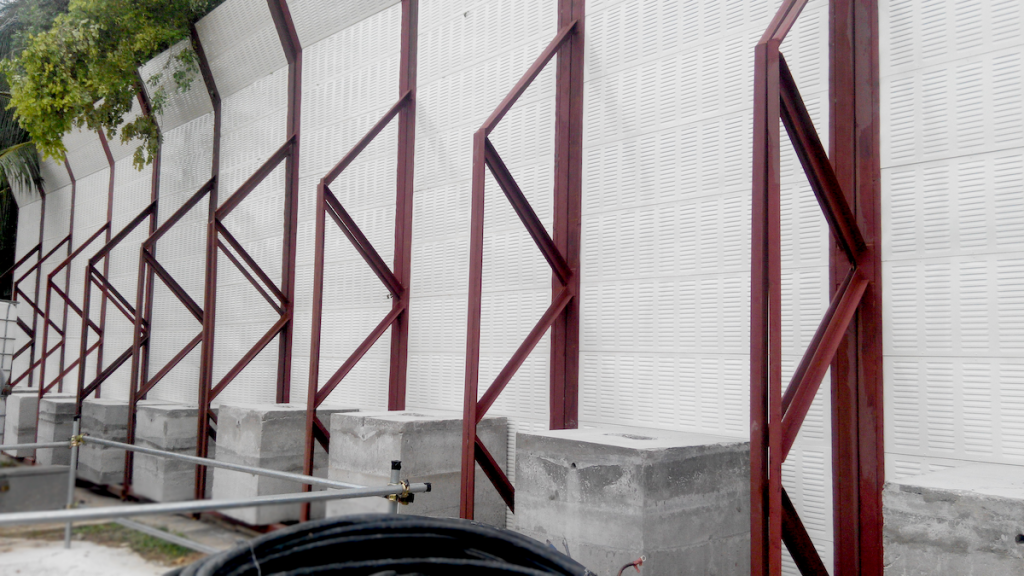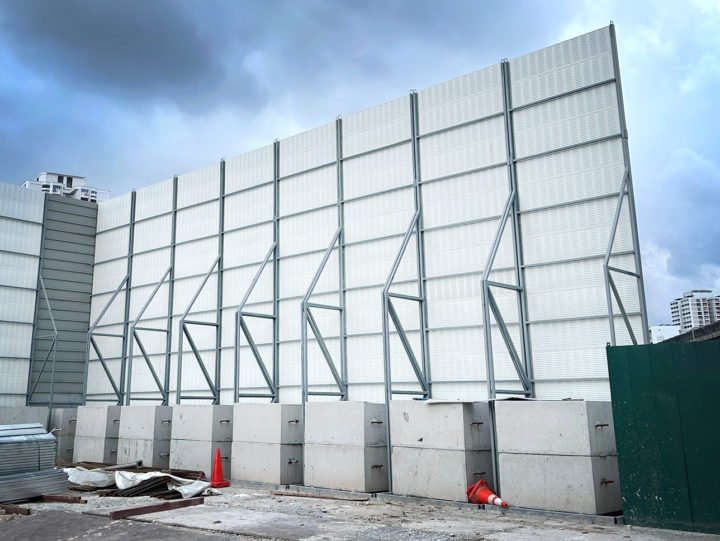
Noise pollution can be a significant source of stress and discomfort in our daily lives, particularly in environments that are already bustling with activity. Whether it’s at a construction site, an outdoor event, or a peaceful suburban backyard, unwanted sound can be an intrusion that affects our well-being.
In such settings, portable noise barriers can offer a solution by physically reducing the transmission and impact of sound waves. However, the effectiveness of these barriers greatly depends on where you place them. Understanding the best placement strategy for these barriers can make a world of difference in achieving the desired noise reduction.
Why Noise Barriers Are Vital
Imagine waking up to the sound of a jackhammer every morning, or trying to sleep with the bass from nearby nightclubs thumping through your walls. It’s no exaggeration to say that noise barriers can be a saving grace in these scenarios. For construction workers, they provide a safer working environment — continuous exposure to loud noises can lead to long-term hearing loss.
At events, barriers can prevent sound from travelling into restricted zones, maintaining a smooth operation and ensuring compliance with noise regulations. Homeowners located near highways or airports often use noise barriers to create a peaceful haven in the midst of urban din.
The Anatomy of a Portable Noise Barrier
Portable noise barrier comes in various forms, from simple foam panels to more complex structures with built-in soundproofing technology. They vary in material, height, and weight, which all play a role in how well they can block sound. The key here is finding a balance between a barrier that is substantial enough to stop or absorb sound waves and one that remains manageable in terms of logistics.
When choosing a portable barrier, consider elements such as the Noise Reduction Coefficient (NRC), Sound Transmission Class (STC) rating, and the barrier’s ability to deal with low-frequency noises, which are typically the most challenging to block. Remember, a noise barrier is only as good as its material and construction.
Picking the Right Barrier for the Job
The type of portable noise barrier you need depends on the specific environment and noise level you’re dealing with. If you’re working in a high-noise construction zone, you’ll want a barrier that’s rugged, tall and offers excellent sound absorption.
On the other hand, if you’re hosting a live music event outdoors, you might prioritise a barrier that’s more lightweight and easy to install, while still being effective at reducing sound transmission.
Consider assessing the decibel level (dB) of the noise source so you can match it with a barrier that has the appropriate NRC and STC ratings. This information will help ensure that you’re not over-engineering or under-protection, balancing cost-effectiveness with noise control.
Material Matters
When it comes to materials, you generally have three options: transparent acrylic, which is great for visibility and doesn’t impede light, canvas or PVC, which is durable and resistant to weather, and high-density polycarbonate or metal panels, which are excellent at blocking noise. The choice depends on how and where you aim to use the barrier.
Height for Halt
In general, the taller the barrier, the better it will be at stopping sound waves in their tracks. Make sure to place your barrier high enough to create a line of sight impediment for sound, which means at least a few feet over the head of the average person.
Weight and Stability
The last thing you want is for your barrier to fall over in a gust of wind or a particularly loud burst of noise. Make sure your barrier is the appropriate weight and has a sturdy base or mounting system to keep it grounded.
The Placement Gameplan
Finding the ideal location for your noise barrier is a puzzle with a few pieces that need to fit together. Where you place it will depend on the source of the noise and the location of the people or area you want to protect from that noise.
● Assess the Sound Source
The first step is to understand where the sound is coming from. Place yourself at the location of the noise source with a helper stationed at the area you want to protect. Walk the path between you and adjust the location of the barrier to block direct sound waves.
● Watch Your Distance
Distance is your friend when it comes to blocking noise. The further a sound wave has to travel, the weaker it becomes by the time it reaches the barrier. Try to place the barrier as close to the noise source as possible without impeding the source itself.
● Think Directionally
Understand the direction of sound propagation. Noise travels in all directions, so it’s not enough to simply place the barrier between the source and the affected area. If possible, angle it to reflect sound upwards, or towards other surfaces that can diminish its impact.
● Observe Line of Sight
A clear line of sight for sound often means a clear one for people, too. Use natural or man-made barriers like buildings and walls to complement your portable barrier. They’ll further break up the sound waves and provide gaps for the intervention of your portable noise shield.
● Adapting to the Moment
Environmental conditions aren’t static. Weather, time of day, and even changes in construction phases can alter the noise landscape. Periodically reassess your barriers’ placement and condition to make sure they’re still giving you the best protection.
● Stay Nimble
Part of the beauty of portable barriers is that they can be moved as needed. Stay on top of the changing noise conditions and be ready to move your barriers around to respond to any shifts in the noise landscape.
● Monitor the Noise
Consider using sound level meters to regularly check noise levels around your barriers. This will help you gauge the performance of your setup and make informed decisions about adjustments.
● Handle With Care
Portable barriers can take quite a beating, especially in rough construction environments. Inspect your barriers regularly and repair or replace any damaged sections. A barrier that’s been compromised won’t be as effective at blocking sound.
● Event Planning Precision
A large music festival wanted to contain the sound from its stages to prevent disturbing nearby residential areas. By positioning a combination of portable walls and barriers judiciously around the concert grounds, event planners managed to lower the noise spillage effectively, maintaining a harmonious relationship with the local community and staying within legal noise limits.
● Construction Site Safety
A team of contractors working on a city renovation project dealt with a variety of noise complaints from businesses and residents. They strategically placed portable noise barriers around the work area, adjusting their setup as the construction phase progressed and new noise sources emerged. The result was a noticeable reduction in the complaints, and the contractors could work in a more peaceful environment.
In Conclusion
Portable noise barriers can be a crucial tool in managing sound pollution in various settings, from the professional to the personal. Placing them strategically requires an understanding of the physics of sound and the environment in which they’re used. By following the guidelines above, and with a little ingenuity, you can significantly improve the sound comfort of your space.
Remember, the key to a well-orchestrated sound reduction plan is to act deliberately, stay flexible, and periodically reassess. Now you’re armed with the knowledge to harness the full potential of portable noise barriers, giving you the peace and quiet you deserve.
Hebei Jinbiao is a leading company in Noise Barrier products and Fencing products in Singapore. We guarantee to provide you with the most high-quality Sound Barrier and Fencing products along with our dedicated assistance. Do not hesitate to contact us. We are looking forward to helping you solve your noise issues, safety issues and protecting you from noise pollution as well as ensuring your safety.

